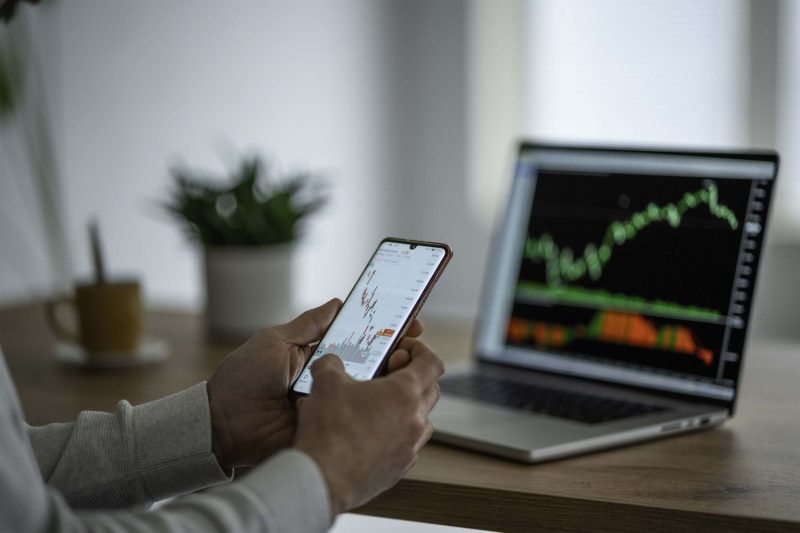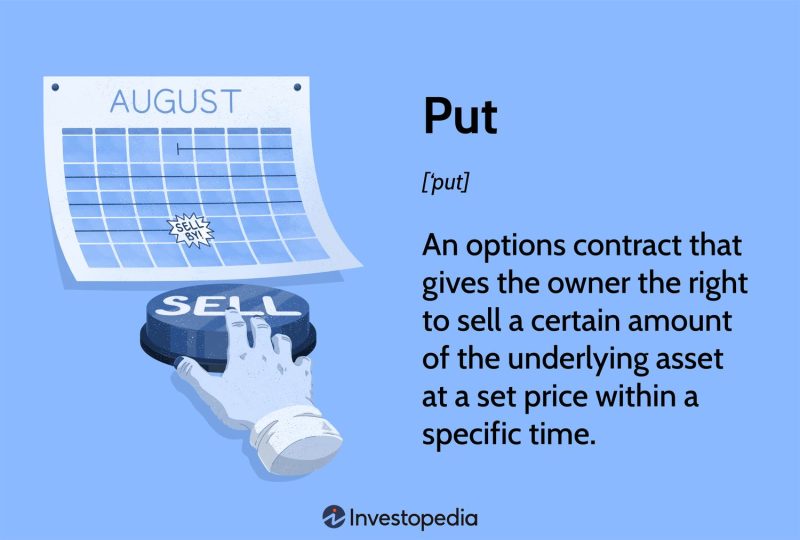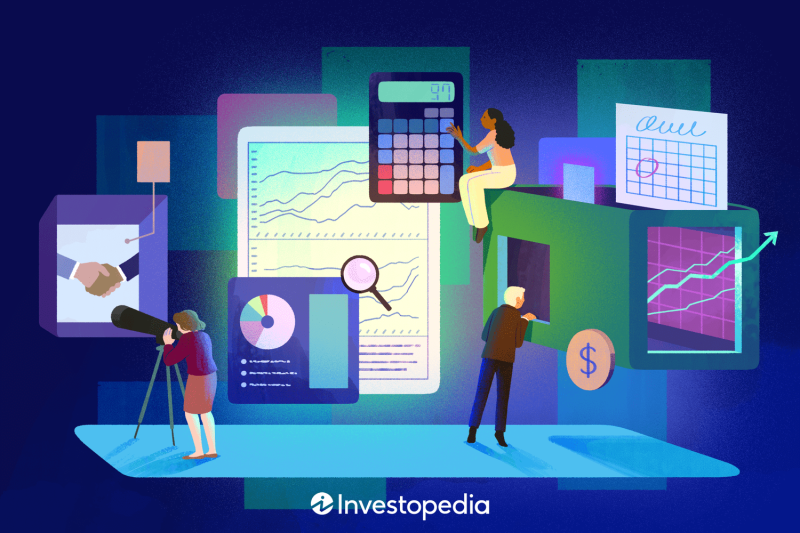Swing trading is the act of transacting in a financial market over a minimum of one day, but up to several weeks, to gain profits. Typically, swing traders utilize technical analysis techniques to identify trading levels for trade entry and exit, as well as the timing of their trades. Swing trading can be very lucrative provided the trader has the discipline to control their risk. Opening a swing trading account is relatively straightforward, but there are certain account features that swing traders will want to consider when choosing a trading platform that fits their needs. This article covers the best practices to follow when choosing and opening the right swing trading account that fits your needs.
How to Open a Swing Trading Account
The two most common types of accounts used for swing trading in stocks include cash accounts and margin accounts.
Determine the Type of Swing Trading Account You Need
Cash accounts do not offer leverage, and only allow you to take long positions in stocks. If a cash account also has an options agreement, you can buy, then sell options contracts. But you can’t sell options contracts unless they are covered by cash (when selling a put option) or an underlying position in the stock (when selling a covered call).
Margin accounts allow you to make all of the transactions permitted in cash accounts, but also allow you to take short positions in stocks by using margin to borrow the stock that has been sold short. Margin account holders can also take uncovered short options positions. A margin account is also required to trade futures, although this type of margin entails posting a certain percentage of the trade value to cover any potential losses suffered on positions. In either case, if the positions lose more money than the margin account covers, the positions can be liquidated through a margin call.
Compare Fees of Different Swing Trading Accounts
Fees are an important component in choosing where to open an account. The most important fee is the commission for transacting in various markets. It is important to know whether you will be charged on both sides—entry and exit—of a trade. For shorting equity markets, the margin rate is important, and can vary greatly between brokers. Different brokers also may have different margin rates for futures trading in the form of higher initial and maintenance margins. In addition, some brokers charge fees for the use of their platform, or other fees such as minimum balance fees, inactivity fees, or high wire transfer fees.
Brokerage fees for transacting in various markets include:
- Margin rates for money borrowed for shorting equities
- Margin rates for futures trading
- Platform fees for the software trading interface
- Other fees, such as inactivity fees, minimum balance fees, minimum commission fees, and wire transfer fees
Consider the Services a Swing Trading Account Offers
Other services you may want from the broker you choose include top-notch technical analysis tools, different types of screeners, order routing technology, a range of different trading vehicles and order types, access to paper trading, a high-quality news feed, educational content, and customer service. Some customers may also want an account that provides banking services, automatic bill payment, and portfolio consolidation and reporting features.
Best Swing Trading Platforms
| Platform | Account Minimum | Fees |
|---|---|---|
| Fidelity | $0 | $0 for stock/ETF trades, $0 plus $0.65/contract for options trade |
| Interactive Brokers | $0 | $0 commissions for equities/ETFs available on IBKR’s TWS Light, or low costs scaled by volume for active traders that want access to advanced functionality such as order routing. $0.65 per contract for options on TWS Light; that is also the base rate for TWS Pro users, with scaled rates based on volume. $0.85 per contract for futures. |
| Webull | $0 | $0 commissions for stock, ETF, options, and cryptocurrency trading (small markup is priced in) |
Open a Swing Trading Account
Once you find a broker that will best meet your needs, you’ll need to apply to open an account. The initial step of opening an account is typically easy to do online. For those looking to add margin and/or options trading functionality to the account, however, the added steps of submitting agreements and gaining the broker’s approval are then required.
Once the account has been approved and opened, you will have to fund the account sufficiently for the markets and position sizes you’re looking to trade before you can make any transactions.
What Information Is Needed to Open a Swing Trading Account?
Personal Information
The personal information and documentation required to complete an online broker’s onboarding process typically includes:
- Name
- Social Security number (or taxpayer identification number)
- Address
- Telephone number
- E-mail address
- Date of birth
- Government-issued ID, such a driver’s license
Financial Information
In addition to providing the broker with the necessary personal information to open a swing trading account, the broker will also require you to share financial information, including annual income and net worth, so the broker can determine whether swing trading is appropriate for you. This is part of all brokers’ Know Your Client (KYC) requirements, which help brokers ensure that accounts will be lawful, managed consistently with fair trading norms, and appropriate for customers’ financial condition and market knowledge.
Start Swing Trading
Once the account is open and funded, with all necessary agreements signed and approved by the broker, you are ready to begin swing trading.
This is where you need to put careful time and consideration into the types of trading strategies you plan on employing, the risk parameters you want to set, and how you will identify and transact in your chosen trading markets. This process includes calculating the impact of commissions, margin, and other fees on your positions, as well as determining the specific trading vehicles, entry and exit points, and stop-loss levels, and how you will manage their positions. Using technical analysis, you may wish to utilize a number of potential swing trading strategies, such as using moving averages, Fibonacci retracements, identifying breakouts, pivot points, or various charting patterns.
Some traders may want to consider paper trading to test their strategies before they put their real capital at risk. Paper trading is available at some brokers, but not all.
How to Swing Trade
Swing Trading Strategies
Swing traders use a variety of strategies, and often combine them when determining trades and trade management. Here are some popular technical charting techniques used by swing traders.
Chart patterns: Price patterns and formations are a key component of technical analysis, and swing traders will look for certain patterns to identify potential trading levels and timing indicators. Chart patterns can be as simple as trendlines, but they also include complex geometric patterns.
Fibonacci retracements: These are levels obtained from the Fibonacci sequence that consist of horizontal lines that are calculated between market highs and lows. The levels are drawn at 23.6%; 38.2%; 50%; 61.8%; and 78.6%; note that 50% is not actually a Fibonacci level, but the 50% retracement level is important, so it is included when calculating the Fibonacci levels. During corrections following a period of trending prices, Fibonacci levels represent prices where the market may act as support or resistance, and represent a good level to trade from and work stops around.
Moving averages: Swing traders will look at moving averages as possible catalysts for price to change direction near. Two of the more popular methods for using moving averages in this way are to use them as possible support and resistance levels, or as a moving average crossover system for timing a trade.
Pivot points: Taking an average of the closing price, the high, and the low is a basic pivot point calculation. Swing traders use pivot points to identify potential support and resistance points. Pivot points can be used to identify trading entry or exit points, or for determining where stop protective levels might be set.
Breakouts: When a market continues to run into support or resistance levels, then finally moves beyond these levels, these “breakouts” may result in accelerated price action in the direction of the breakout. Breakouts occur when market prices move above key resistance levels or below key support levels on price charts.
Factors to Consider When Opening an Online Brokerage Account
Fees and commissions: With any trading account, how much you need to pay to trade in overall fees and commissions is important. Since swing traders are more active and have higher trading volume, fees and commissions can quickly cut into profits or add to losses. Day traders place a high value on execution speed, and are willing to pay a commission for control over order routing and trade execution, while swing traders may not be as sensitive. Traders need to decide whether commission-free brokers or paid commissions for better trade execution will work better for their trading style.
Margin rates: Margin is also an important consideration for swing traders using leverage, whether margin is limited to 50% leverage for overnight positions or highly leveraged futures trading. While you gain more exposure for profits and losses, the margin rate of interest on short stock positions can easily cut into profits or add to losses, and today’s higher interest rates also mean higher margin rates. So, it is important for traders to include this additional cost in their decision on which broker to use, as well on the calculations they make when planning trades to avoid losing more than they planned on their swing trades.
Finally, those trading options and futures should pay special attention to whether they are paying fees on one or both sides of their trades. Even brokers advertising “commission-free” option trading often charge a fee, and this could be on just one or both sides of a trade. Obviously, paying twice the cost will impact overall returns on a trading account.
Research and trading tools: Trade execution is an important component of swing trading. This means that the technology offered by a broker is important. Technical trading is a critical tool for the swing trader, so charting programs that offer multiple technical screeners to help identify trading opportunities is important. Further, the ability to manage trades directly from charts is also very helpful. Strong technical analysis tools are not just nice to have features for swing traders; they are critically important.
Brokers offering a wide range of order types, such as trailing stops and conditional orders including one-cancels-the-other orders, are also very important for swing traders. Because risk and capital management is a critical part of successful trading, this type of flexibility is important for traders to be able to effectively manage positions and lock in profits or take losses. Similarly, tools such as options screeners and options calculators are also helpful tools for finding worthwhile trades, and for determining good trade timing and entry and exit levels.
Account minimums: Traders looking to trade on margin will need to deposit at least $2,000 to meet FINRA’s minimum margin requirements before they can trade, even if many brokers will allow you to open an account without any money. Further, some brokers require higher account balances for those looking to trade futures or on margin.
Demo account: If you are new to swing trading, choosing a broker that offers a demo account, also known as a paper trading account, might be worthwhile. Demo accounts allow traders to practice trading without having their capital at risk until they feel comfortable trading their chosen strategies. Demo accounts are fully functioning accounts, so you can practice using different order types and trade management tools while utilizing fictitious balances that allow you to see how trading profits and losses would impact portfolio performance.
Customer service: Unlike long-term investors, who are willing to tolerate short-term market losses to maintain their long-term positions, markets move quickly for day and swing traders. While system outages and trading technology malfunctions are rare, they do occur, and that’s when having access to a comprehensive customer service offering matters most.
Educational content: It is incumbent on traders to do their homework and understand what they are doing before putting their capital on the line. This includes knowing the details about the products they trade, because mistakes can be costly. Further, having knowledge about the risk to capital that they take, knowing how margin increases opportunities for profits and losses, and how to manage trades through different order types is critical for a swing trader.
While many brokers provide this content, and it is nice to have it on the broker’s platform, new and experienced swing traders should understand that this content is available online without having to pay for it. So it is a nice-to-have, but not a need-to-have, on your brokerage platform.
FAQs
What Is Swing Trading?
Swing trading consists of market timing strategies for speculating on price changes in markets over short- to medium-term time frames, ranging from one day to a few months. Swing trading can be used on any tradable security, including stocks, fixed income, commodities, currencies, cryptocurrencies, futures, and options.
The goal of a swing trader, like any trader, is to capitalize on price changes, with swing traders typically using technical analysis for determining trade entry and exit points.
Managing risk by entering into trades with positive risk/reward ratios and using stop losses and predefined entry and exit levels are important trade management techniques for swing traders to use in order to protect and build their capital.
Is It Difficult to Open a Swing Trading Account?
Opening a swing trading account is not really any different than opening a regular brokerage account; the requirements are essentially the same. Cash accounts don’t require as much as opening margin accounts or futures accounts. Brokers, under KYC rules, have a responsibility to obtain customer identification information, perform due diligence to evaluate customers to ensure they are not engaging in suspicious activity and that they understand the markets they plan to trade. Further, account holders, especially those that will be trading futures or using margin that entails leveraged trading, also need to have sufficient financial resources for the trading they intend to undertake. Margin, futures, and options trading require additional documentation and approval from the broker.
How Much Money Is Needed to Fund a Swing Trading Account?
You can open a swing trading account without any money at many brokers, just like you can open any other cash or margin account, but there are minimum balance requirements for trading on margin. However, you need capital in your account to swing trade. Traders looking to take short positions, buy options, or trade using leverage require a margin account with at least $2,000 to meet FINRA’s minimum margin requirement for trading stocks on margin. Those looking to swing trade with futures will need capital to meet minimum and maintenance margin requirements for positions held overnight; compared to day traders, margin requirements for futures are higher for positions held overnight.
Are Swing Trading Accounts Safe?
Yes, swing trading accounts are safe. Accounts are protected by SIPC up to $500,000 for securities, and up to $250,000 in cash, in the event that your broker goes bankrupt. This article on bank failure, and if your assets are safe, provides additional background on what happens in the event of a broker’s failure. In addition, many brokerage firms offer account owners additional account protection beyond SIPC protection, typically in the form of insurance policies underwritten by Lloyds of London.
What’s the Minimum Swing Trading Account Balance for Futures Trading?
While many futures brokers do not have minimum account size requirements, the reality is that you need a reasonable account balance to meet margin requirements to swing trade futures. While some brokers allow intraday trading of micro S&P futures for as little as $50, once you hold a position overnight the margin requirements increase significantly. For the same micro S&P futures contract, for example, you would need to have sufficient funds to post initially and maintenance margin of at least $600, and different brokerage companies may have higher margin rates. On top of that, an account with a very small balance could easily eclipse a 1% stop loss threshold just from regular market volatility. In reality, those looking to swing trade futures should have several thousand dollars in their account to cover initial and maintenance margin, and to withstand market swings without being stopped out for lack of capital. It is best to have at least $5,000 in a futures account.




